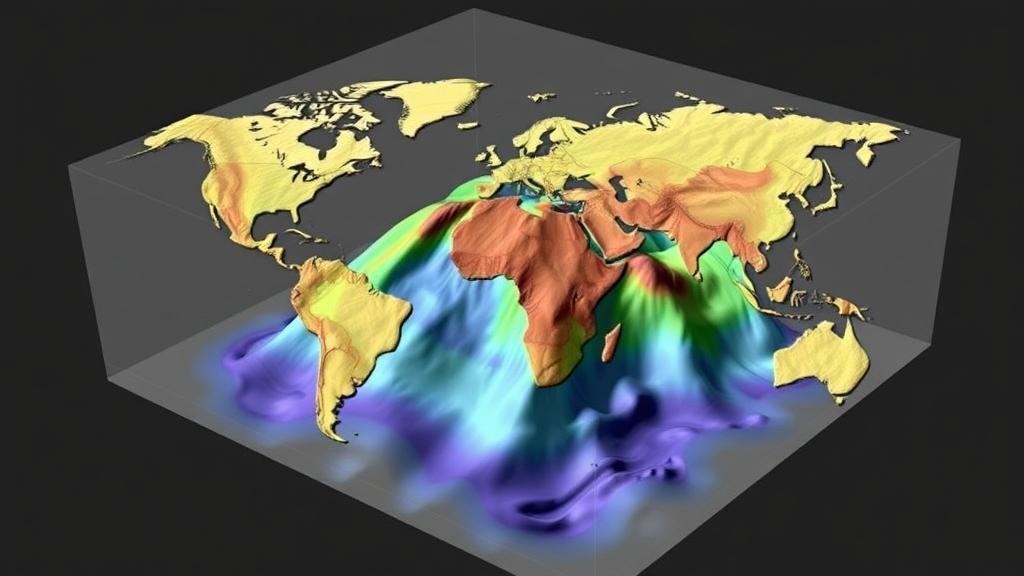Techniques for Identifying Buried Ore Deposits Using 3D Geophysical Models
Techniques for Identifying Buried Ore Deposits Using 3D Geophysical Models
The exploration and identification of buried ore deposits is a complex endeavor that employs various geophysical techniques. As technology advances, the utilization of 3D geophysical modeling has become paramount in improving accuracy and efficiency. This article will delve into the specific methods used in conjunction with 3D geophysical models, highlighting their applications, advantages, and real-world examples.
Understanding 3D Geophysical Modeling
3D geophysical modeling involves the creation of three-dimensional representations of subsurface geological structures using various geophysical data. Techniques such as seismic reflection, magnetic surveys, and electromagnetic methods are commonly integrated into these models. This multidimensional approach allows for a more comprehensive analysis of the subsurface, enhancing the ability to identify mineralization.
Key Techniques for Identifying Buried Ore Deposits
- Seismic Reflection Methods
- Magnetic Surveys
- Electromagnetic Techniques
Seismic reflection uses the propagation of seismic waves to detect subsurface structures. By analyzing the time it takes for waves to return to the surface, geophysicists can infer the geological layering and identify potential ore deposit locations. For example, in Canada, seismic methods have successfully delineated complex structures in metamorphic terrains.
Magnetic surveys measure variations in the Earths magnetic field caused by different mineral types. These surveys are instrumental in mapping iron-rich deposits and can provide significant insight into geological features. A notable case is the identification of the Olympic Dam deposit in Australia, where magnetic anomalies pointed to substantial copper-uranium resources.
Electromagnetic (EM) methods utilize the conductivity of the subsurface materials. e techniques are particularly effective in locating conductive materials such as sulfide ores. The use of 3D modeling in EM surveys has helped locate several buried deposits, notably in mineral-rich regions like the African Copperbelt.
Integrating Data from Multiple Sources
One of the significant advantages of 3D geophysical modeling is the ability to integrate data from various sources. For example, combining seismic, magnetic, and gravity data into a single model can lead to enhanced resolution and identification of buried ore deposits that might otherwise be overlooked. This integrated approach was notably applied in the search for nickel deposits in Norway, where the combined data provided a clearer picture of the subsurface geology.
Applications in Ore Exploration
The practical applications of 3D geophysical modeling in ore exploration are vast. Companies often utilize these models in the following ways:
- Targeting specific geological formations that are likely to host ore deposits.
- Reducing drilling costs by providing precise locations for exploratory boreholes.
- Improving resource estimation through enhanced geological context.
Challenges and Limitations
While 3D geophysical models offer substantial benefits, they are not without challenges. The complexity of geological formations can sometimes lead to ambiguous results, requiring further verification through drilling. Also, the cost of creating detailed 3D models can be prohibitive for smaller exploration companies. It is crucial for geophysicists to weigh the cost against the expected benefit, ensuring a strategic approach to exploration.
Future Directions in Ore Exploration
The future of identifying buried ore deposits lies in advancements in technology and data analysis techniques, including machine learning and enhanced computational models. These innovations promise to further increase the resolution and accuracy of 3D geophysical models. As the industry embraces these advancements, the potential for discovering new ore deposits will undoubtedly expand, contributing to more sustainable mining practices.
Conclusion
Identifying buried ore deposits has always been a challenge in the mining and exploration industry. But, with the advent of 3D geophysical modeling techniques, geophysicists have new tools at their disposal to enhance the accuracy and efficiency of their explorations. By employing various combination methods and leveraging advanced data integration techniques, the potential for discovering new resources is greater than ever. As technologies continue to improve, the landscape of mineral exploration will evolve, paving the way for more environmentally responsible and economically viable extraction practices.



